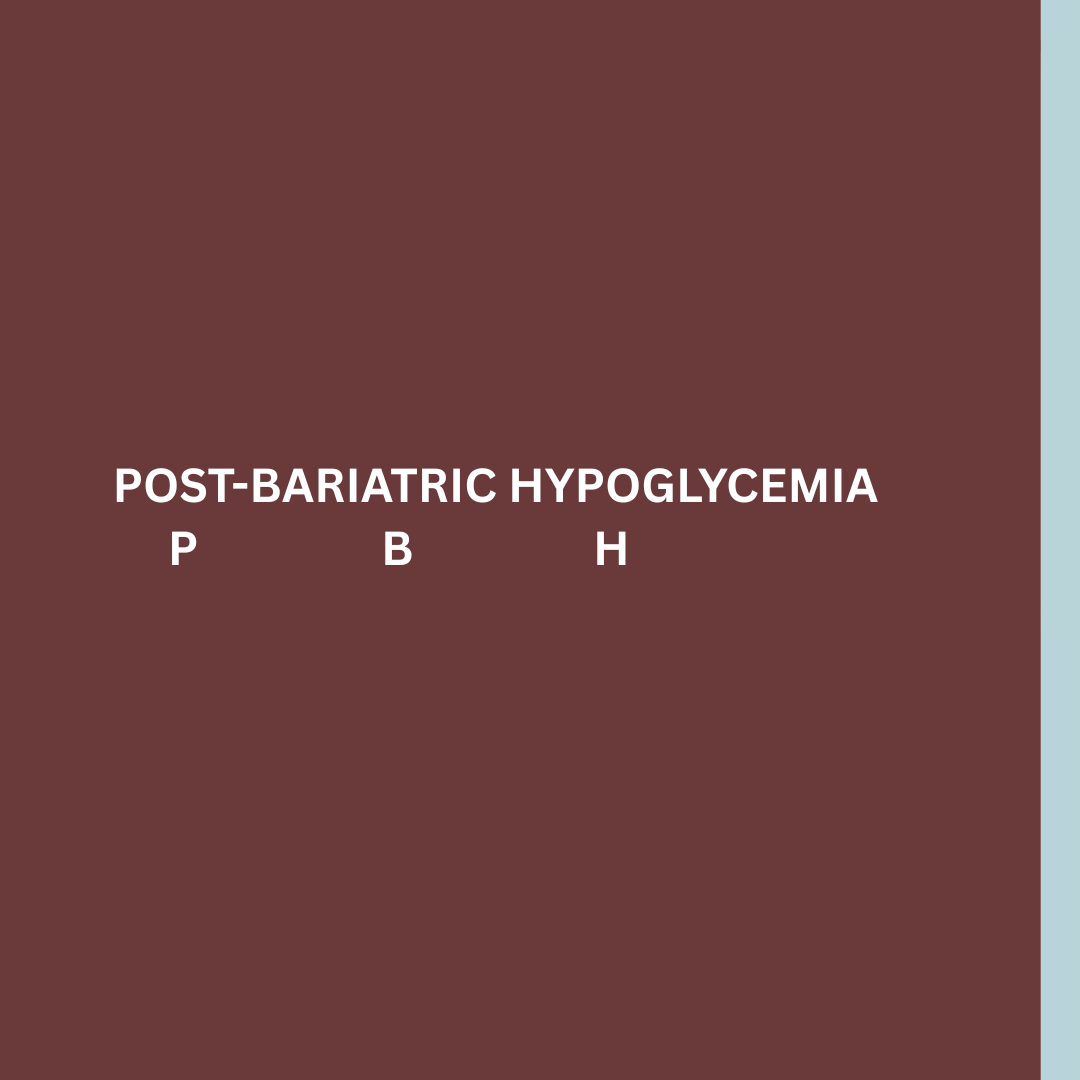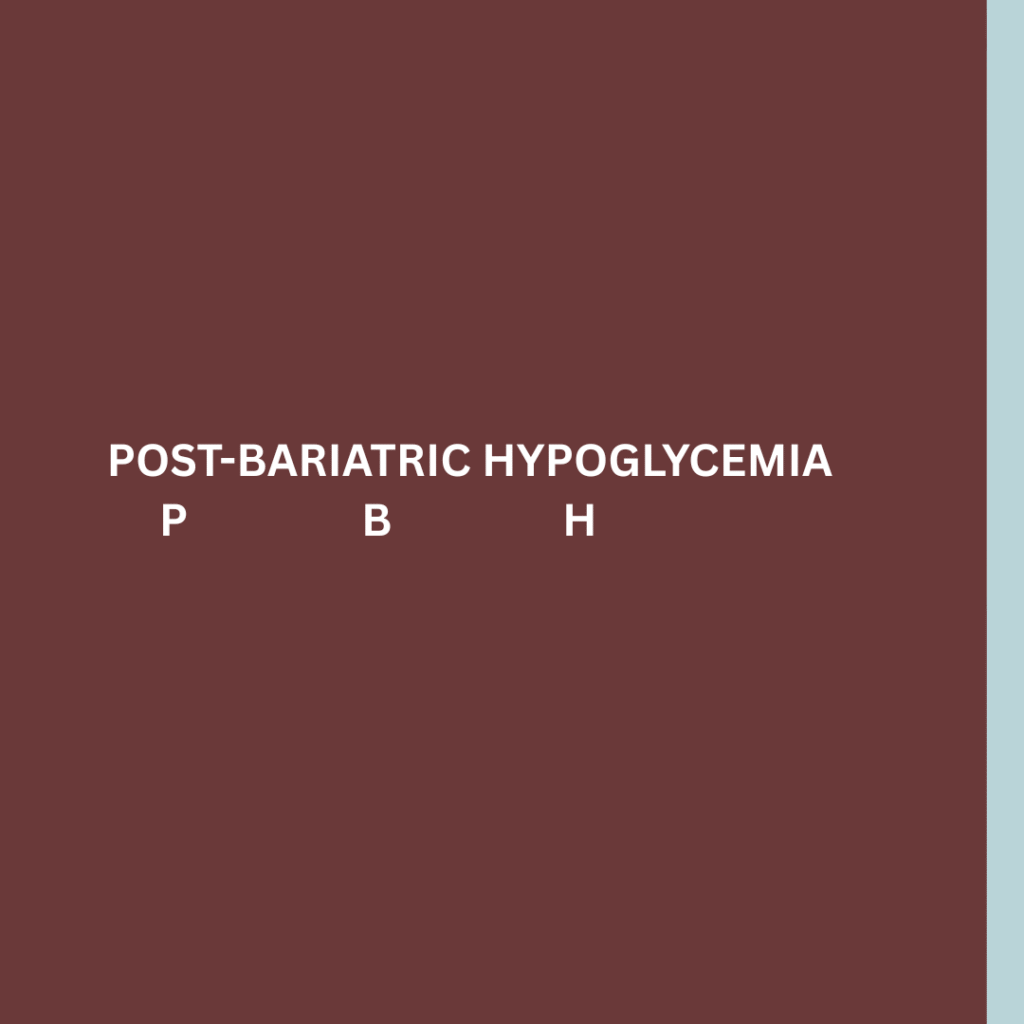
This one was put together and thoroughly researched by Mary Megbule. Quite enlightening and Solving… ENJOY!
Post- bariatric hypoglycemia is a late typically post- prandial hypoglycemia that emerges months to years after metabolic bariatric surgery like RYGB (Roux- En- Y gastric bypass) and sleeve gastrectomy. It usually appears 2-4 hours after meals and is linked to an exaggerated insulin response to rapid nutrient delivery to the distal gut. PBH must be distinguished from early dumping (within 60minutes), medication- induced hypoglycemia (e.g. sulfonylureas/ insulin) insulinoma (A tumor of the pancreas that secretes insulin) and other systemic causes.
Contemporary data suggest that symptomatic PBH is uncommon, but sensor detected low glucose is frequent. Studies comparing mixed meals testing vs continuous glucose monitoring (CGM) report hypoglycemia in ~60% vs. ~66-75% much of it asymptomatic. Key drivers include accelerated nutrient transit, exaggerated GLP-1-mediated insulin secretion, Impaired counter-regulation (e.g. glucagon) and increased insulin sensitivity after surgery. Risk appears similar after RYGB and Sleeve overall, though severe PBH requiring hospital admission is reported more often after RYGB.
Things to do and avoid for diagnosis of PBH in 2025.
Start with history and logs timing (2–4-hour post meal), neuroglycopenic symptoms and confirm Whipple’s triad (glucose< 3.0mmol/l [54mg/dl]) preferably venous plasma using a low range validated assay, if venous sampling is impractical, multiple capillary readings with ISO- standard meters plus a convincing history are acceptable.
Avoid routine OGTT or MMTT for diagnosis. Both can provoke false positives/negatives and are not recommended for standard diagnostic workups. CGM is not currently recommended for diagnosis because of accuracy limits in the hypoglycemics range: However, 2024-2025 reviews emphasise CGM’s value for education, pattern recognition, diet titration and safety. Some studies show higher sensitivity than MMTT for detecting lows, use it as a management tool not as diagnostic gold standard.
How PBH can be managed: Food Therapy
Nutrition therapy is the cornerstone and often sufficient.
- Eat small and frequent meals (≤6/day)
- Control carbohydrates intakes (30/meal or less)
- Avoid simple sugars and drinking with meals, also limit alcohol
- Consider bedtime slow-release starch in selected patients with nocturnal lows.
- Incorporate exercise timing (post meal gentle activity may help, prolonged/fasted or late post prandial intense activity may worsen lows).
Treat acute lows with glucose protein/fat follow on. Evaluate driving/ occupational risks and consider CGM alerts for pattern recognition and prevention.
Pharmacotherapy in 2025.
- Acarbose (a glucosidase inhibitor): It reduces rapid carbohydrates absorption and post meal insulin peaks, widely considered first line drug when diet alone fails
- Calcium-channel blockers (e.g. verapamil, nifedipine): Reduces B-cell calcium influx and insulin secretion. It is useful when acarbose is inadequate or poorly tolerated.
- Diazoxide: K-ATP opener that suppresses insulin release, limited by edema and GI effects.
- SGLT inhibitors /dual SGLT ½ (e.g. canagliflozin): It reduces post- prandial excursion by increasing glycosuria or limiting intestinal glucose uptake.



